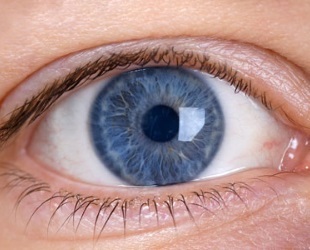
Iridocyclitis is a serious ophthalmic disease.
It is manifested by inflammation of parts of the choroid of the eyes, such as the ciliary body and the iris.
This ailment can develop in any person regardless of age.
The trouble with iridocyclitis is that it often becomes chronic, and it is not always possible to identify the cause of its occurrence.
- 1. Characteristics of the iridocyclitis
- 2. Causes of the occurrence of
- 3. Symptoms and methods of diagnosis
- 4. Medical measures
- 5. Prognosis and prevention
- 6. Video
Iridocyclitis characteristic
What is it?
If you disassemble the structure of the eye, we will see that the anterior section of the choroid of the eye in itself includes the ciliary body and the iris. Inflammation of the first element is called a cyclite, and the second is called irite.
Given the fact that both are close together, and also have a common blood supply network, the inflammation of one almost always causes a similar reaction in the second element of the eye's shell. And in this case the disease is called iridocyclitis.
Types of the disease
Depending on the nature of the disease, it can be:
- acute,
- subacute,
- chronic,
- recurrent.
According to the nature of inflammation, iridocyclitis happens:
- serous,
- exudative,
- fibrinous-plastic,
- hemorrhagic.
The origin factor divides the disease into:
- infectious,
- is infectious-allergic,
- is not infectious-allergic,
- is post-traumatic,
- caused by systemic diseases,
- with obscure etiology.
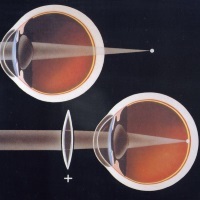
Read more - hypermetropia of the eyes. Description of the disease.
In the article( tyts) methods of treatment of Lagoftalm.
What is the cause of the bursting vessel in the eye?http: //moezrenie.com/poleznoe/stati/ lopnul-sosud-v-glazu.html
Causes of the onset of
The disease can develop for a variety of reasons. Among them:
- traumatic eye injuries( wound, surgery, concussion);
- keratitis( inflammation of the iris);
- transferred bacterial, viral diseases( measles, influenza, streptococcal and staphylococcal infections, chlamydia, malaria, gonorrhea, tuberculosis, etc.);
- chronic foci of infections in the oral cavity and nasopharynx( tonsillitis, sinusitis);
- rheumatoid condition( Reiter's syndrome, rheumatism, Bekhterev's disease, etc.);
- disorders in metabolic processes( diabetes, gout),
- systemic diseases of unknown origin( Behcet's disease, sarcoidosis, etc.).

Infectious and rheumatic diseases account for 40% of cases as the cause of iridocyclitis.
Not the last place among the causes of the disease is occupied by provoking factors:
- immune and endocrine disorders,
- hypothermia,
- malnutrition,
- stresses,
- physical overload.
Symptoms and Diagnostic Techniques
Features of the acute period
Iridocyclitis, as a rule, is characterized by unilateral eye damage. The first manifestations of the disease in the acute phase are characterized by symptoms:
- edema,
- eye pain and redness,
- lacrimation,
- change in iris color,
- deformity and narrowing of the pupil,
- formation of pus in the lower zone of the anterior chamber of the eye,
- view.
If the iris and the front surface of the lens are spliced all along, a circular spike is formed. In the case of an unfavorable course of the disease, spikes create the danger of developing blindness, since the pupil completely becomes infected.
Clinical picture of
Each type of disease has its own symptoms:
- In viral iridocyclitis, there are lingering manifestations, the formation of serous exudate, increased intraocular pressure.
- The tubercular form has a mild symptomatology with the appearance of yellowish tubercles on the iris, the development of posterior powerful adhesions, the appearance of "fog" or complete overgrowth of the pupil.
- Autoimmune disease corresponds to a severe course with relapses during exacerbation of the underlying disease and frequent complications( keratitis, atrophy of the eyeball, secondary glaucoma, scleritis, cataracts).Each subsequent relapse is more difficult and often results in blindness.
- Traumatic form is characterized by the development of sympathetic inflammation of the healthy eye.
- Iridocyclitis against the background of Reiter's syndrome, which arose from chlamydial infection, manifests itself in the form of conjunctivitis, urethritis, joint damage with a slight inflammation of the choroid.
Complex of diagnostic measures
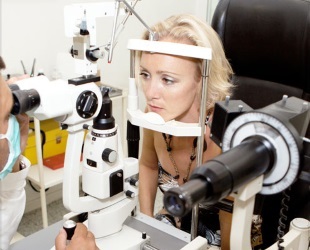
Disease is diagnosed as a result of a comprehensive examination using:
- of the inspection,
- of palpation,
- of the ultrasound and biometrics of the eye,
- of measurement of intraocular pressure,
- of visual acuity testing,
- of immunological clinical laboratory studies.
To determine the origin of the disease, the following are prescribed:
- assays( biochemical and general) of urine, blood,
- rheumatic test for systemic diseases,
- coagulogram,
- general and local allergic tests.
Immune status is assessed by a blood test on the level of serum immunoglobulins. Their presence in the tear fluid is also checked. You may need a radiography of the nasal sinuses and lungs.
The characteristics of the symptoms depend on the need for examination by different specialists:
- dentist,
- rheumatologist,
- otorhinolaryngologist,
- phthisiatrist,
- dermatovenereologist,
- allergist.
Treatment measures
Emergency therapy
Conservative therapy consists of emergency measures and routine therapy.
At the very beginning of the disease( the first few hours),
- is prescribed in the eyes of mydriatic( droplets for dilating the pupil),
- non-steroidal anti-inflammatory drugs,
- antihistamines,
- corticosteroids.
Adrenaline hydrochloride is used as a mydriatic solution in the form of a 0.1% solution and atropine sulfate is a solution of 1%.
Treatment in the hospital
For routine therapy the patient is placed in a hospital. He is prescribed:
- local and general antiseptic therapy,
- antiviral and antibacterial agents,
- anti-inflammatory non-steroid drugs,
- hormonal drugs.
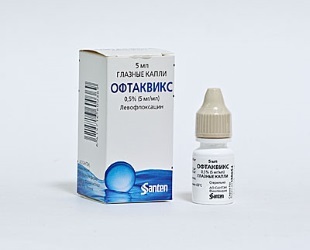
Autoimmune and toxico-allergic iridocyclitis can be treated with corticosteroids.
Antibacterial drops( Miramistin, Sulfacil sodium, Okomistin), antibacterial drops( Tobrex, Oftakwix, Floxal), antiviral ointments and drops( Acyclovir, Okoferon) are used as antibacterial and antiviral drugs.
The course of treatment includes detoxication therapy, the installation of mydriatic solutions in solutions to prevent the fusion of the crystalline lens with the iris. Also resort to antihistamines, multivitamins, immunostimulants, enzymes for resorption of exudate and adhesions.
Among the physiotherapeutic procedures are:
- magnetotherapy,
- electrophoresis,
- laser therapy.
Operational measures
Surgical treatment of the disease is addressed when it is necessary to separate the adhesions( the anterior and posterior adhesions of the iris are dissected), as well as the secondary glaucoma formed.
When a severe purulent complication of the eye develops, its operative removal is prescribed.
Folk remedies
To get rid of the acute form of iridocyclitis, use home recipes. Folk methods will help to facilitate the process of recovery.
- 1 liter of lemon juice mixed with 400 grams of chopped garlic. Pour in 1 teaspoon.solution in a glass with warm water and take it inside. Store the product in a place that is protected from sunlight and in a closed container.
- Take the bark of aspen( 2 tablespoons) and pour it with water. Boil a quarter of an hour. Leave for 4 hours. Drink the broth for 200 ml every other day.
- Heat is very useful for this disease. You are more in the sun. In this case, the eyes should be closed.
- Make a warm compress. Heat the salt or sand. Pour them into the fabric, cool to 39-40 degrees. Apply to the site of inflammation for 10 minutes.
- Two leeches attach to your temple( if both eyes are affected by the disease, take 4 leeches).This method is suitable for chronic iridocyclitis;
- 0,5 kg of aloe leaves chop the meat grinder. Pour 500 ml.water. Separately, take 100 g of fresh St. John's wort or 30 g of dry grass, pour 0.5 l.water. St. John's wort boil in a water bath for half an hour. Leave for 1 hour. Strain, leave for a couple of hours. Combine all the ingredients with 500 g of honey and 500 ml.white wine. Mix foods until smooth. Leave for a week in a dark place. Drink a drink for 1 tsp.daily, three times a day for 5 days. After a week, start gradually increasing the dose. The course lasts 1 month.
Prognosis and prevention
Options for outcome of treatment
Timely treatment of the disease with an adequate therapeutic regimen guarantees a very favorable prognosis.
In 15-20% of patients complete recovery is noted due to treatment of acute form of iridocyclitis. From 45 to 50% of patients are characterized by the transition of the disease into a subacute recurrent form with less evident relapses, coinciding with exacerbations of the main disease( gout, rheumatism).
Transition of iridocyclitis into a chronic stage is possible with a persistent decrease in vision. Launched and untreated cases lead to dangerous complications that threaten not only eyesight, but also the preservation of the eyes.
These include:
- pupillum fusion,
- cataract,
- chorioretinitis,
- secondary glaucoma,
- retinal detachment,
- atrophy of the eyeball,
- vitreous deformities, etc.
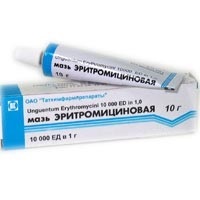
Note - Instruction for use on erythromycin ophthalmic ointment. Effective ways.
In the news( link) analogs to Maxidex.
Price gel eye Solcoseryl!http: //moezrenie.com/lechenie/ glaznye-mazi / gel-solkoseril.html
Preventative strategy
The main rules for the prevention of iridocyclitis:
- in time started treatment of the underlying disease,
- sanitation of foci of chronic infections in the body.
This disease is more difficult to cure in cold weather. Therefore, at low temperatures, supercooling should not be allowed and stay in the cold for a long time.
Depending on the cause, iridocyclitis may have a different clinical picture. Despite the possibility of relapses in some forms, in general the disease is treated well. It is very important not to miss the start of therapy.
Video
Useful video:
